What is Literary theory?

Literary theory is one of the most significant tools to comprehend literary works and almost any art form. This article introduces to literary theory and criticism, and provides an overview of popular theories of the past and present.
This article includes:
- Popular Theories
- Classical Literary Theory
- Medieval Literary Theory
- Renaissance Theory and Criticism
- Romantic theory and Criticism
- Marxism
- Psychoanalysis
- Formalism
- Hermaneutics and Reception Theory
- Structuralism and Semiotics
- Post-Structuralism and Deconstruction
- Feminist Literary Theory
- Post-Colonial Literary Theory
- New Historicism
- Cultural Studies
- Queer Theory
- Difference between Literary theory and Criticism
- Importance of Literary Theory
To understand literary theory, let us assume that you are reading “Pride and Prejudice” written by Jane Austen.
While reading, you find the novel to be a classic love story between the rich and powerful Mr. Fitzwilliam Darcy and headstrong Elizabeth Bennet. The novel initially begins with hostility between the two, but eventually ends up with mutual love and respect for each other. Despite marriage being unquestionably essential for a woman’s economic stability, Elizabeth refuses to marry only for economic security. She initially refuses Mr. Darcy’s proposal due to his disrespect towards her family, and only accepts him once she has grown to respect and love him.
This is just one interpretation of the novel.
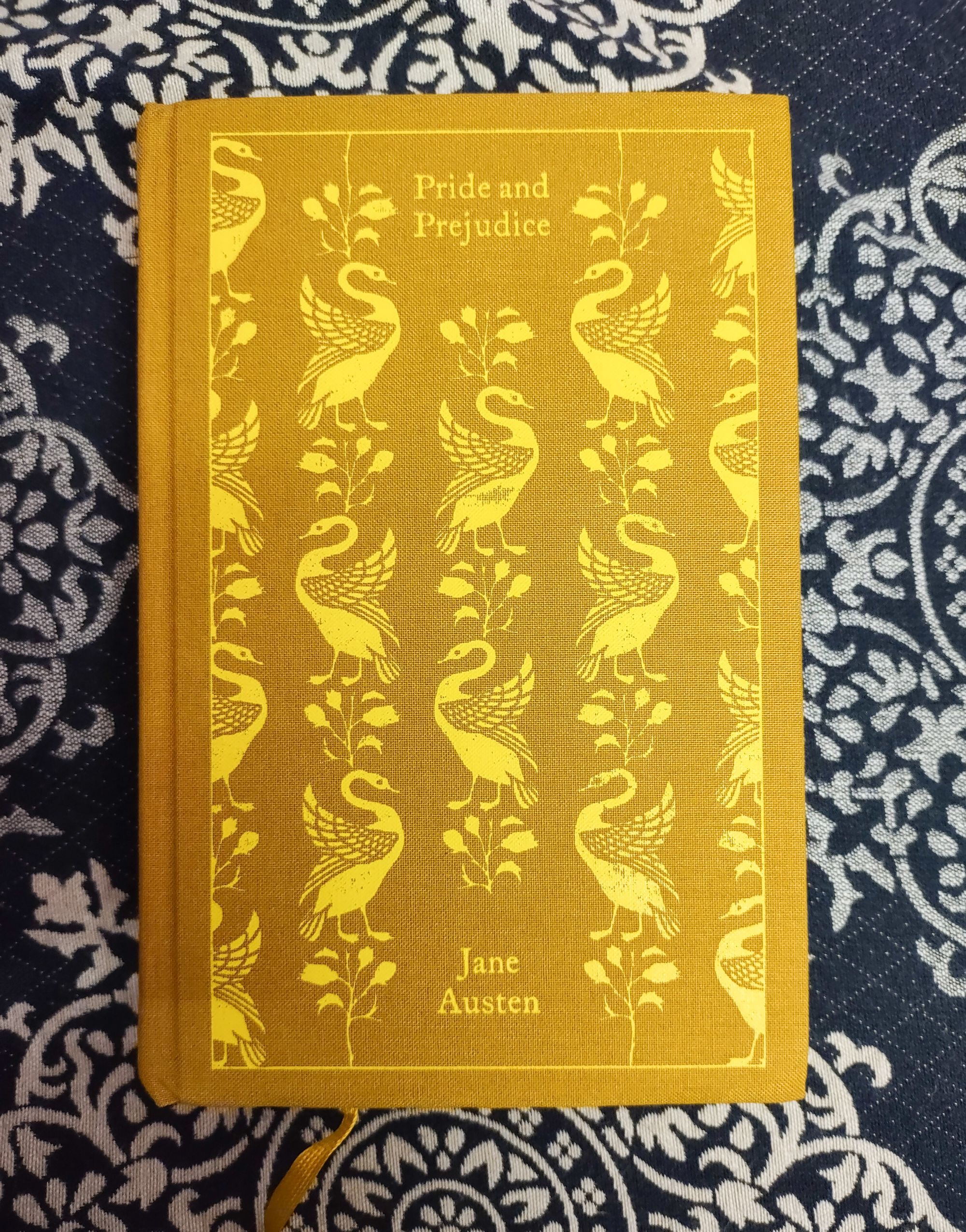
As you read Pride and Prejudice as a romance, you could not help but notice how women hardly had any viable options for economic stability except for marriage. You notice how Mr. Bennet’s daughters, being women, cannot inherit their father’s property at Longbourn. Instead, it is their distant cousin, Mr. Collins who is destined to inherit their property just because he is a male. You begin to realize how women had no economic agency apart from marrying a financially stable man. On one hand this makes women feel trapped and desperate, so much so that they begin plotting and scheming in order to secure an economically advantageous marriage. On the other hand, men are reduced to just a source of financial security. This completely removes any scope of a marriage based on love, respect, and mutual understanding. Charlotte Lucas very cleverly orchestrates her proposal by Mr. Collins and marries him not because she loves and respects him, but because he is her only source of economic stability and a comfortable home.
This, as you can see, is reading the classic in a brand new light. Your focus is now shifting from romance to some equally important realities that the book offers.
Another possible train of thought while reading Pride and Prejudice might be around class discrimination. You might have noticed how Mr. Darcy, during his first proposal in Chapter 34 cites economic differences between Elizabeth and himself as obstacles and setbacks for him. The absolutely disrespectful and condescending behavior of Lady Catherine towards Elizabeth and her belief that Darcy marrying Elizabeth will bring nothing but disgrace to him, highlight the stark class differences included in the novel.
As we can now realize and perhaps have already often known, a single work of literature (in this case Pride and Prejudice), can and most often has several interpretations. These interpretations might occur to the reader within one reading, or might take several readings to uncover and realize subtler and hidden meanings in the work.
Another very important factor that impacts interpretations is the reader. For example, who is reading Pride and Prejudice? A literary student’s deliberate interpretation of the classic might be different and more detailed from a reader reading it for leisure. Interpretation also depends on individual sensibilities and awareness and might be extremely subjective.
Time, is another factor that significantly impacts interpretations. How we interpret Pride and Prejudice is not the same as its interpretation and reception when it was published.
What do we mean by Literary theory?
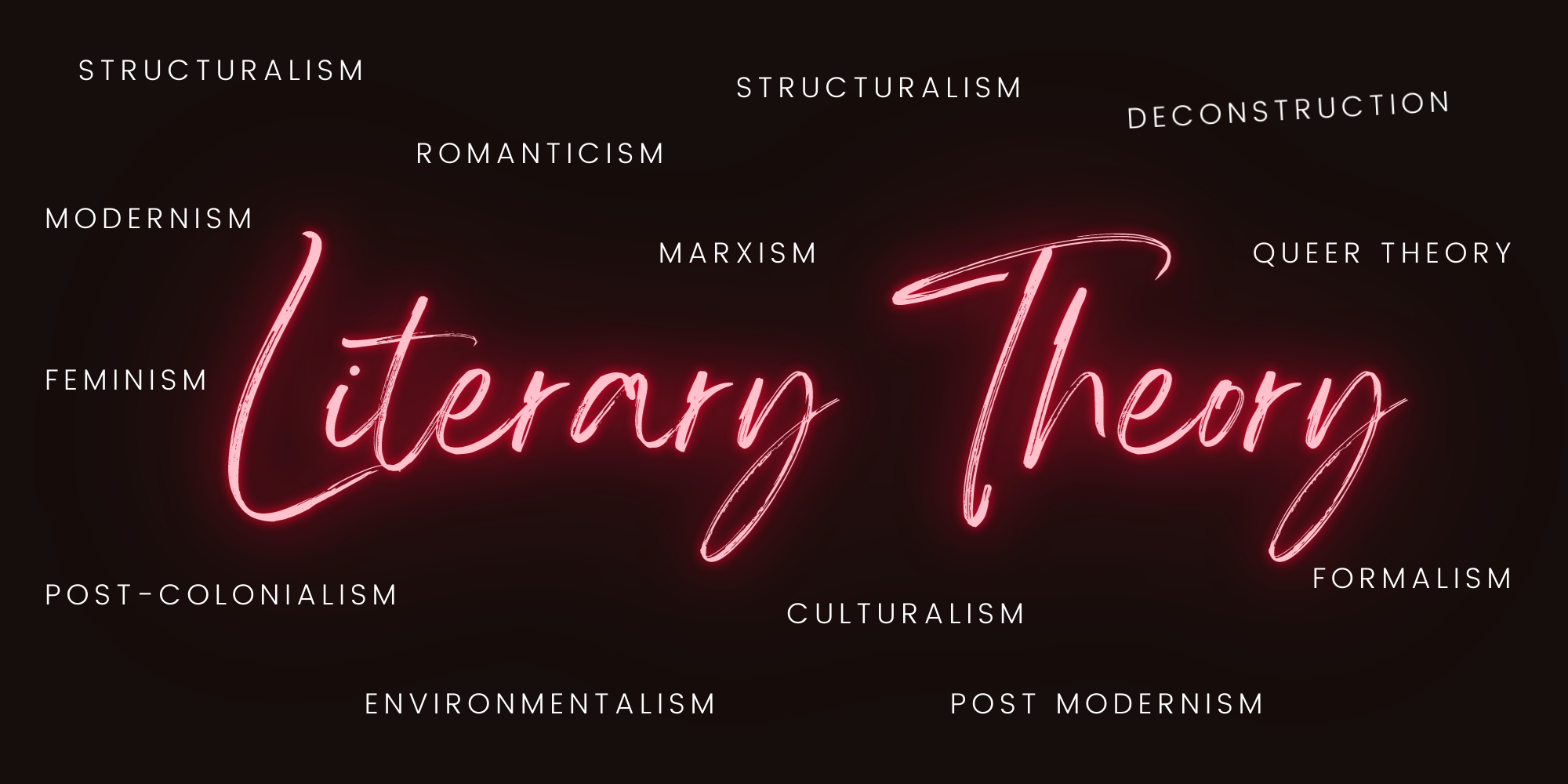
Literary theory refers to the various school of thoughts that shape and affect our interpretations of a literary work. It is theory that facilitates impactful and effective criticism of literature. For example, your understanding of the feminist theory will facilitate the feminist criticism of a literary work. You will be better equipped to uncover any underlying oppression of women, and projected and internalized misogyny. At the same time you might also be able to recognize the subtle ways a literary work might empower women. Thus, literary theory is an indispensable tool that empowers a reader to not only understand a literary work better, but also discover new possible meanings of a work, thus maintaining its relevance with time.
Reading almost any text , simple or dense, is a complex and unlimited activity. This is one of the beneficial things that theory teaches us. Theory resembles philosophy as it asks foundational questions and creates systems at times. However, literary theory also involves a certain amount of skepticism. It involves a variety of doubts about the foundations of our perceptions and what we can think. This does not mean that all theories are skeptical. In fact, some of the most powerful and profound literary theories are positive. Nevertheless we will come to this realization that most of the texts that we read today have a prevalent sense of skepticism facilitated by theory.
Popular Literary theory through the years
From classical literary theory to the latest queer theory, there have been numerous ways literature has been perceived and interpreted. This section includes a short introduction for all the popular literary theories from the classical period to the present day.
Classical Literary Theory: 5th Century B.C.E. to 5th Century C.E
Sophists, Plato, Aristotle, and Horace
We begin with classical literary theory because its impact and influence is still prevalent. Aristotle, Plato and Horace are among the most influential and seminal classical theorists, followed by Gorgias, Quintilian and others.
The Sophists
Sophists prioritized winning or succeeding over everything else. The early Sophists such as Gorgias and Thrasymachus did not view language and poetry as a medium for representing the truth. Instead, they considered language as a tool of thought formation and persuasion. The Sophists utilized language and poetry to persuade the audience to conform and comply with their point of views. They prioritized influencing the audience over representing truth, wisdom, and reality.
Plato (429?–347 B.C.E.)
Plato’s disregard for poetry stemmed from his reaction towards the early sophists. He did not believe that poetry was a source of knowledge and reality. For Plato, reality was only constituted in the transcendental world of Ideas and Forms. This world could be comprehended only through reason.
On the other hand, our world was a sensory illusion, a departure from the ideal world of Forms. Thus, poetry only offered an inferior mimesis of an illusory world of the senses, and was thrice removed from the absolute reality and truth. For Plato poetry is:
- Irrational and based on inspiration rather than knowledge
- Does not represent reality or truth
- Does not teach morality
- Depicts false role models and images
Therefore, Plato believed that the poet must be banned from society. The only kind of poetry acceptable to him was one that praised God.
Aristotle (384–322 B.C.E.)
One of the most important contributors to classical literary theory, Plato’s student Aristotle believed that poetry was capable of representing the truth as it mirrors life creatively, not passively. He believed, where history was just a record of accidental events, poetry rises above such accidental incidents and represents and highlights universal truths. Aristotle believed that humans were naturally gifted for imitation that imparts learning along with pleasure. In addition to defending poetry, Aristotle also laid emphasis on tragedy.
Quintus Horatius Flaccus also known as Horace
Horace agreed with Aristotle and believed that poets must not only imitate nature but must also mirror great writers. For Horace, the main function of poetry was to combine “pleasure with usefulness” or “delight and instruct”.
Medieval Literary Theory and Criticism 5th to 15th Century
The medieval theory includes documents on the practice of reading, theory of language, and the nature and use of literature.
Majority of medieval theory was formed from the interpretation of sacred Scriptures and most medieval writers explored how to read and interpret the Book of God’s Word or the Bible. Hugh of St. Victor, a leading theologian, described reading as an imitation or reflection of God’s works. Hugh perceived the entire world as a book written by God. Thus for him, reading was not just a pale imitation of nature (as believed by Plato) but was more comparable with reading the world.
The art of reading and interpretation is founded on Augustine’s notion that the human language is a reflection of the word of God of Logos. It guarantees the unity of meaning in the Bible and the book of Nature, even when the meaning is not immediately perceptible. For Augustine, language exists exclusively to impart the meaning that pre-exists in it. It is not playful (as possible in poetry). For Augustine, language is “transparent”.
Medieval writers accepted Augustine’s theory of language and his distrust of figurative language and poetic fables. They tried to highlight the truth and transparency of simple language and discredit and highlight the futility of poetic fictions. However their efforts were largely in vain as they could not ignore the presence of poetry and figurative language in the Bible, the text of Christianity. Upon this, the medieval writers argued that God could only be represented indirectly through figurative and poetic language. In this case, the heroic songs and psalms in the Old Testament, and Christ’s parables in the New Testament were perceived as metaphors that created similitude between this world and the next. For Augustine such similitudes were crucial and he argued that “by means of corporeal and temporal things we may comprehend the eternal and spiritual.” In the end, the medieval defense of poetry was that it should not be just for the ears, must not be merely ornamental but must encourage the reader to perform good deeds.
During the medieval age, the writers fundamentally focused on detailed and rigorous textual interpretations. Most significant were the exegetical genres of the gloss found in the works of ancient grammarians, that were utilized in the interpretation of the Bible. The glosses were explanatory words written in the margin or between the lines of an otherwise dense text. Commentaries were much more extensive that initially appeared only in the textual margins but later appeared as continuous texts. An example of such commentary is Bernardus Sylvestris’s comments on the First Six Books of Virgil’s “Aeneid”. Thus, glosses and commentaries shaped the approach to authoritative texts. During that time, all texts were in the form of manuscripts full of glosses and commentary that facilitated the future interpretation of texts.
The main technique of medieval gloss and commentary was allegory. They were read for their underlying esoteric meanings. Quintilian defined allegory as “one thing in the words, another in the senses”. However allegory did not remain just a figure of speech. Due to Augustinian belief that poetry was a means to understand an otherwise transcendental and inaccessible world, allegory became a critical tool to control and spread the meanings of sacred texts and scriptures. It was only later that it became a literary genre.
Following Quintilian’s definition of allegory, medieval writers elaborated upon four levels of allegorical interpretation and utilized it for interpreting and spreading the meaning of the Bible. These four allegorical levels were:
- The literal or historical
- The allegorical or spiritual
- The tropological or moral
- The anagogic or mystical
If we take an example of the story in the New Testament where Christ raises Lazarus from the dead, it can be interpreted at four levels:
- On the literal or historical level, this story serves as a record of an event that occurred
- On the spiritual or allegorical level, this story indicates the death of Christ, his descent into hell and his resurrection.
- On the moral or tropological level, it represents the sacrament of Penance, through which a soul is raised from sin’s death
- On the mystical or anagogical level, the story portrays the resurrection of the body after the Last Judgment.
By the 12th century, this interpretation of the Bible was extended to the study of pagan mythologies, along with classic works such as Aeneid by Virgil. Afterall, medieval christians were unable to accept pagan Gods, nor were they able to read stories simply as “fables”. They instead perceived them as expressions of philosophical ideas. The allegorical interpretation eventually phased out after the Middle Ages, but regained popularity and influence during the late 20th century. Both Northrop Frye, and Fredrich Jameson formed ways of interpreting a text on multiple levels.
Another major involvement of the Medieval theory and criticism was prescriptive poetry. Prescriptive poetry deals with how to write poetry and was mainly inspired by Horace’s “Ars Poetica”. Ars Poetica coherently combined classical views of rhetoric, style, and grammar, and became a guide to compose.
The medieval ages considered the poet as someone who preserved the past by developing ways of extending it.
Renaissance Theory and Criticism: 16th to 18th century
The Renaissance theory and criticism demonstrated a renewed interest in Greek and Latin classics. There is also a focus on vernacular language and national literature. During this time there were debates between the ancient and the modern that began in Italy and eventually spread throughout the western Europe.
Ancient Critics
Critics and writers who defended the ancients focused on classic genres such as tragic drama and epic and considered them as models for literary compositions. In the beginning, they not only emphasized on imitating the genres but also to use Latin as the befitting language. They preferred to comply strictly with the classical form. This preference stemmed from a combination of Poetics by Aristotle, and Ars Poetica by Horace.
The Renaissance critics appreciated distinguished genres. One of the most famous doctrines of the time was that of the “three unities” (of action, place, and time) derived from Aristotle’s theory. Aristotle stated that dramas don't have just one action but also one setting and a short span of fictional time (preferably within a day). Aristotle’s description of Greek tragedies became a set of rules to write plays.
These rules first emerged in commentaries on Aristotle by Ludovico Castelvetro, an Italian Renaissance critic. It became extremely influential a century later, in the writings of Pierre Corneille (a French dramatist), and John Dryden. Both of them dedicated their works to their native languages and literatures and artfully combined ancient and modern perspectives.
The Aristotelian concept of three unities was also accompanied with Horatian focus on “verisimilitude”. This concept meant excluding fantastic events and beings and focusing on the depiction of historical realities and facts. The fantastical events were perceived acceptable only if they could be explained by Christian beliefs (for instance, the actions of Gods and demons). Critics emphasized important passages in Horace which focused on the importance of decorum and the importance of copying the strategies and techniques of literary predecessors. The critics of this time imitated the classics in order to imitate nature. This tendency was advocated by Julius Caesar Scaliger, the Italian critic. His notions were summarized by Alexander Pope in his “Essay on Criticism”. For these critics, “To copy nature is to copy Them”.
The Modern Critics
The moderns appreciated and encouraged new literary forms and genres that were far removed from the celebrated and imitated classical genres. Works such as Orlando Furioso by Ludovico Ariosto, and Faerie Queene by Edmund Spenser were criticized due to them not following the classical forms and deviating from unity of form and verisimilitude. However, Giambattista Giraldi appreciated Ariosto for constituting a new genre that was independent of classical forms. Similarly, Dante’s dream allegory in his “Divine Comedy” was appreciated by Giacopo Mazzoni for its completely imaginative imitation. Both Mazzoni and Giraldi appreciated the creative and unbridled powers of a poet. This was further celebrated by Sir Philip Sidney and this laid the foundation for Shakespeare who aptly stated, “ Nature never set forth the earth in so rich tapestry as divers poets have done, neither with so pleasant rivers, fruitful trees, sweet-smelling flowers, nor whatsoever else may make the too-much-loved earth more lovely: her world is brazen, the poets only deliver a golden.”
Along with the celebration of the power of a poet’s creativity, came recognition and celebration of vernacular languages rather than of Latin. Now the critics as well as poets began to believe that they could achieve greatness at par with the Greek and Roman classics if they wrote in their vernacular language instead of Latin.
Thus, works in Italian were celebrated and appreciated by Giraldi and Mazzolini; the French language was supported by Joachim du Bellay and Pierre de Ronsard; and the English language was supported by Sir Philip Sidney and George Puttenham. The inclination towards the vernacular language was also due to the evolving national consciousness and a rising preoccupation with a recognizable literary tradition.
The Romantic Literary theory and criticism: Late 18th century
Romantic theory and criticism evolved in the late 18th century and flourished during the early 19th century. Romanticism was impacted and inspired by the French and American revolutions. The major focus of this theory was on the individual. Romantic theory was heavily influenced by Immanuel Kant and his focus on how our understanding of the world is entirely subjective. Romantic theory was a departure from the Neoclassical adherence to classical forms. There was now a regard for individuality, sensibility, and originality, which first germinated in the mid 18th century.
Celebration of the individual led to the perception of poetry as the personal expression of a poet. This was drastically different from neoclassical standards and perception of poetry. While neoclassicism preferred tradition, decorum, and preoccupation with the genre, romantics considered art intimately intertwined with their personal feelings, impressions, and sentiments.
How did Romantic critics see poetry?
Samuel Taylor Coleridge in his 'Biographia Literaria' said that a poet “diffuses a tone and spirit of unity, that blends, and (as it were) fuses, each into each, by that synthetic and magical power, to which we have exclusively appropriated the name of imagination.”
Romanticism viewed a poem as an organic form that was created by the individual imagination of a poet. This viewpoint was in stark contrast to the neoclassical point of view that poetry must strictly abide by and imitate the previous classics and adhere to the rules of classical genres. This was the age when Shakespeare’s works that were criticized by the neoclassical critics for not complying with the unities of time, action, and place, gained renewed appreciation.
Apart from their preoccupation with the harmonizing and synthesizing power of imagination, the romantics also focused on symbols. This focus on symbols is evident in the works of Coleridge, and Ralph Waldo Emerson. The poetic symbol expressed universal ideas and concepts through particular details, images, and metaphors. This was a deviation from allegory. The romantics condemned allegory and viewed it as a mechanical way of forcing morality and meaning in poetry. In contrast to allegory, symbols depicted meanings organically, thereby depicted beauty, truth, as well morality. According to Friedrich von Schiller, when you read a poem, you reconcile the general with the particular, and get an uplifting sense of freedom, which is mutually shared by the poet. This saves both, the reader as well as the poet from the alienation and despair caused by the modern world. Thus, poetry, through symbols, humanizes an extremely dehumanized world.
The dominantly preferred genre during the romantic era was lyric poem which replaced the epic poem preferred by the Neoclassicals. The Romantics wrote lengthy poetry that included arrangements of lyrical pieces. William Wordsworth’s Prelude is a typical example of a romantic lyric poem. The preference for the lyric poem was due to the fact that it was the best genre to accommodate the expression of individual emotions.
Another diversion from neoclassical poetry was the presence of occasional fragmentation in the lyric poetry. This was a departure from neoclassical preference of unity, wholeness, and rational design. There was also an attempt to attain “sublime” (the meeting of the inner, emotional world with the outer natural world).
Although the English novel was yet to be taken seriously, it flourished during the romantic era.
Another significant feature of the romantic era was emphasizing the historical stages of development. Romantics began to dwell on literary and cultural history due to the changing social, political, and economic circumstances around them. Critics such as Jean-Jacques Rousseau, G.W.F Hegel, and, Germaine de Staël, among others attempted to correlate art and literature to historical periods. The poetic genre was identified as belonging to the time when the people were more intuitive than rational.
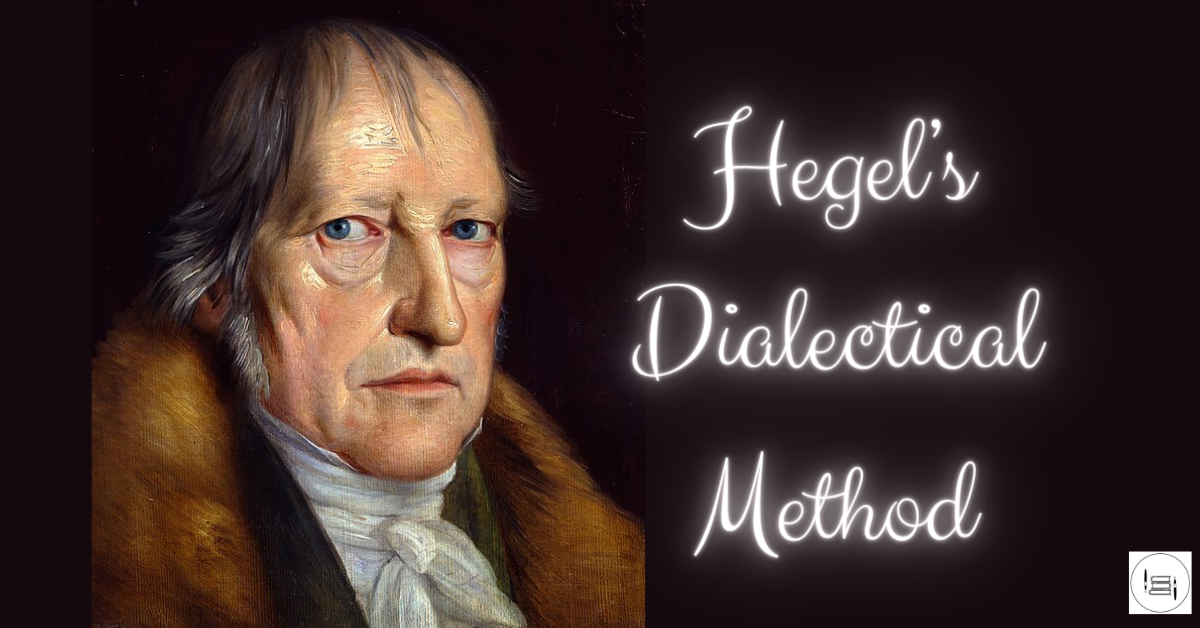
Marxism- 19th Century
The difference in people’s social class and history forms the core of Marxist theory. Marxist criticism dominantly stems from the works of Karl Mark, a 19th century German philosopher and economist.
One of the major components of marxist theory is “modes of production”. Marxism states that the human history can be divided into 7 modes of production:
- Tribal Hordes
- Neolithic kinship societies
- Oriental despotism
- Ancient slaveholding societies
- Feudalism
- Capitalism
- Communism.
Every mode of production has a basic class struggle pattern. The capitalist mode of production has a conflict between the industrial labor or working class (the proletariat), and the owners of the means of production (the bourgeoisie). Other classes such as the unemployed criminals also known as lumpenproletariat, and aristocracy are mere witnesses from the historical margins.
Eventually, this conflict between the proletariat and the bourgeoisie leads to the victory of the former, and the foundation of the communist mode of production. This communist mode of production frees the society from exploitation, class-struggle, and polarizing inequality.
The Marxist structure of society.
According to the marxists, the foundational structure of the society constitutes the socioeconomic elements. However, all the cultural elements such as law, education, religion, philosophy, and politics comprise its superstructure. Ideology includes the ideas, values, and belief systems of the ruling class and are circulated throughout all cultural spheres. The working class that believes and follows the ideology displays “false consciousness” as following the ideology ignores the ground realities of their working-class life.
The term “hegemony” denotes the perpetual dominance of the ruling class’s ideology on all classes through non-violent mediums such as church, family, school, family, media, mainstream art, technoscientific establishments, etc. Louis Althusser, a leading marxist critic called these institutions “Ideological State Apparatuses”. These institutions maintained social order and tackled any instability or conflict. These work outside the official state power.
According to Marxism, art and culture is not outside the influence of social forces, and are not independent. In fact, they play an important role in the transmission of ideology and maintaining hegemony. However this does not imply that art and culture are just mouthpieces of the dominant class. There are many instances when art has explicitly rejected and protested against the ruling systems, while implicitly pointing out their shortcomings.
Art often presents counterhegemonic images thereby suggesting liberative possibilities and providing them with socially critical undertones.
Class Conflict in Stylistics
In stylistics, the class conflict gives rise to “heteroglossia” as stated by Bakhtin. Heteroglossia is the depiction of multiple points of views in an artistic work. Thus, from the stylistic point of view, a work will constitute different dialects, generational slangs, literary genres, class mannerisms, etc, of the English language. Ulysses by James Joyce incorporates such conflicts through the heteroglot discourse. He depicts a carnivalization of different languages protesting against the official style.
Commodity, Commodity fetishism, and Commodification.
Marx’s concepts for commodity, commodity fetishism, and commodification are often used by marxists in their theory.
- Commodities: Commodities are goods that are primarily produced for monetary exchange and profit. For example, a farmer will produce crops to sell and not for his personal use. For him, the crop does not have use value but only exchange value. Labour is now bought and sold in the money economy. Labour is no longer done by individual workers at the time of producing the goods for their personal use. Workers now labor for another to earn money and then exchange it for items required for subsistence.
- Commodity fetishism: This term denotes our fascination and attraction for the array of brand new goods in a store. We forget the labor of the workers that went into the production of that particular product. For example, in the current situation we are so used to ordering online, where it has almost become a habit. The entire process of production, packing, transit, escapes us. Another example is ordering food online on a whim, irrespective of the weather or other conditions, and completely forgetting the effort of the delivery agent. There is a displacement of use value from the product or commodity and it has been transformed into being of exchange value. This causes alienation of workers from their own labor. The producer no longer cares about what it produces. Moreover, the key element of commodity exchange is exploitation that occurs because owners extract a high profit margin from the workers.
- Commodification: The accelerated phenomenon of goods production by the workers not for their use value but for their exchange value is called commodification. This phenomenon is taking over almost all aspects of our life. Everything today can be purchased as a commodity. Be it sexual mates, or art. According to marxists, commodification leads to the reduction of people and human relations to mere objects with a price tag. For example in the field of art, commodification results in artists hawking their works, writing it to facilitate sale, in a competitive and impersonal market. Commodification also results in buying of critics by the rich thus rendering the role of criticism futile.
Marxists and cultural theorists worry how the market and the media is taking over every form of resistance. They often wonder that if radical movements that aim for a complete social change, such as surrealism, gangsta rap, punk, etc, can become commodities for profit, how is it possible to oppose hegemony in the first place. Commodification diffuses the force of subversive artistic practices and turns them into hot stories or merchandise meant for market economy. Marxist literary theory and cultural studies enquire about this system.
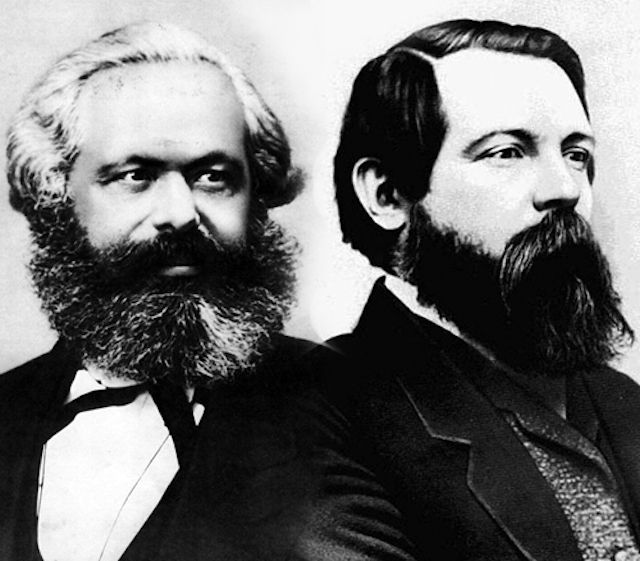
Psychoanalysis
According to psychoanalysis theory, the human psyche is made unconscious and conscious. Most parts of our psyche are out of sight and are a part of the unconscious. On the other hand, our consciousness constitutes a smaller part of the psyche. According to the psychoanalysts, fantasies, slip of the tongue, dreams represent repressed and censored wishes. The techniques utilized by psychoanalysts to interpret dreams and other unconscious material were adopted by literary and cultural critics who too were trying to decipher symbolic texts.
According to Freud, the formation of dreams includes the censorship of wishes. Therefore the dreams undergo four kinds of distortion before reaching our consciousness. These four kinds of distortions are:
- Condensation
- Displacement
- Symbolization, and
- Secondary revision or elaboration.
It is due to these distortions that dreams appear as nonsense. Psychoanalysts try to make sense of such dreams. They consider these distortions creative and the nonsense meaningful. Literary critics too have to often deal with texts that appear nonsensical and distorted just like dreams.
Critics have often found the archetypes by Carl Jung extremely useful. These archetypes include universal symbols such as the garden and the desert, fire and water, the monster and the hero, death and birth, that are stored in the collective unconscious of humanity.
Modern and postmodern literary theories are extremely impacted by the psychoanalyst concept of the unconscious.
Harold Bloom’s “Anxiety of influence” and écriture féminine of French feminism highlight the complexity of psychoanalytic theory. According to the “Anxiety of Influence”, a book by Harold Bloom, every poet belonging to the Anglo-American tradition, from the early Romantics to the late modern period, suffers from an anxiety of influence that is both devastating and productive. The role model of a new poet serves both as a competition as well as an inspiration. The budding artist naturally wishes and aims to compete against and one day himself/herself surpass the already established poet. Before the neoclassical and romantic era, literary influence was entirely advantageous (for instance influence of Spenser on John Milton). However, with the rise of lyric poem as the dominant genre, the influence of a predecessor became a source of anxiety. It involved the aspiring poet’s primal repression of the predecessor and caused eventual psychological defenses against the role model such as masochistic reversals, sublimations, introjections, regressions, and projections. Bloom refers to these as “misprision”, which means misinterpreting, misreading or mistaking.
Harold Bloom was criticized for focusing on competition rather than collaboration, and for preferring canonical poets over newer poets. However he has never been questioned about his understanding of unconscious repression or of distortion.
The psychoanalyst Jacques Lacan was a major influence behind the concept of écriture féminine or feminine/female writing. It was then revised by the French feminist Hélène Cixous. According to the theory of female writing, during its earliest stages of psychosocial development, an infant moves from an imaginary order that is a mother-centric, presymbolic, pre-oedipal space, to a space of “symbolic order” which is a separation of self from the mother, of law, of social codes, and patriarchy. The feminine writing is a departure from the patriarchal writing with its strict grammar , genres and boundaries. This writing taps into imagination, and provides voice to the unconscious, the body, and to the polymorphous drives. Even though this kind of writing can be written by both males and females, it is a psychopoetics that Cixous positions against patriarchal values and practices.
In both the theories of “anxiety of influence” by Bloom and “écriture féminine” by Lacan and Cixous, Freud’s theory of the “Oedipus complex” plays a pivotal role.
What is Freud’s theory of “Oedipus complex”?
According to Sigmund Freud’s Oedipus complex, an infant must undergo three stages of development: oral, anal, and oedipal, for his psychological well-being. During the oedipal stage, the male child must detach from his mother and begin to identify with his father while entering into the Symbolic order. Oedipus complex is defined by the hostility and rivalry harbored by the male child towards his father as he begins to consider his father as a competition for his mother’s love and attention. According to Sigmund Freud, the Oedipus Complex is shown by males with insufficient oedipal development.
Anti-Oedipus by Gilles Deleuze and Félix Guattari
In their book ‘Anti-Oedipus’, French philosopher, Gilles Deleuze and French psychoanalyst Félix Guattari, impactfully revised Freud’s theory of Oedipus complex. They criticized many aspects of freudian theory and refuted Freud’s belief that the nuclear family was the universal foundation for normal human development. Through their works, Deleuze and Guattari argued:
- Freud’s theory attempts to dominate the unconscious to the hegemonic order of a patriarchal family, capitalist economy, and the rule of the law.
- Since freudian psychoanalysis is confined to the oedipal triangle, it fails to acknowledge the complex nature of subjectivity.
Formalist Literary Theory
Early 20th century
The formalist literary theory was a departure from the subjective theories of literature such as critical impressionism which was both relativistic, and solipsistic. The formalists are not interested in:
- A poet’s feelings or emotions
- Responses of readers
- Representation of wisdom, truth, or reality.
Instead, formalist literary theory only caters to the artistic structure and form of literature. It prioritizes literary work over the artist, universe or the audience. Anglo-American New Criticism and Russian formalism are the most influential and popular schools of formalist criticism.
New Criticism
The New Critics view poetry as an independent and autonomous entity and focus on its form and structure. For them, the most important characteristic of literature was “organic unity”. There is a conscious departure and separation of literary criticism from:
- Background sources
- Biographies
- Historical and social contexts
- Reception contexts
- Politics
Formalist literary theory ‘depersonalizes’ a poem and the poet is replaced by a persona who is an abstract and dramatic character internal to the said poem. The formalists support a close reading of poetry in the context of its structure, and complex stylistic orchestrations. New Critics highlight and try to seek organic relationships of literary elements such as images, tropes, symbols, style, genre and its features, setting, tone, etc.
According to New Criticism, any attempt of relating the literary work to its writer/author is known as the “intentional fallacy”. On the other hand, our attempts to focus the responses of readers is known as “affective fallacy”.
The Russian formalists
Russian Formalists Roman Jakobson and Boris Eichenbaum also differentiated between the literary and the non-literary. They separated literary criticism from psychology, intellectual history, and sociology and focused on highlighting the "literariness" of literature. According to the formalists, literature constitutes the works that draw attention to its complexity of formal devices and strategies such as narrative structure, versification, style, etc..
Where New Criticism aims to study the convergence of literary elements in a structure, the formalists, on the other hand are inclined towards creative deviation of literary elements from the conventional norms.
Hermeneutics and Reception Theory
Understanding Reception theory or Reader-response theory
According to contemporary literary theory, there are various types of readers:
- Ideal readers: They are the ones who are hypothetical and are capable of decoding a literary work perfectly, and know everything required to comprehend it.
- Superreaders: All innovative and original literary works require a super reader. Super Readers are ideal readers who have exceptional literary and linguistic proficiency along with a superior aesthetic sensibility.
- Implied readers: These are the readers whom the text seems to be addressing to. While reading a novel we might assume the presence of a reader, who might even function as a character occasionally. For example, in ‘Heart of Darkness’ by Joseph Conrad, Marlow narrates his stories to the characters, who function as implied readers.
- Virtual readers: Virtual reader is the one to whom the literary text is vaguely addressed by the writer/author.
- Real readers: Real readers are those whose responses to drama, poetry, novels, and other literary texts have been registered by theorists. In some cases unique responses by the real readers have been analyzed by critics.
- Historical readers: Historical readers are the ones who read the text at the time of its publication
- Resisting and critical readers: Critical and resisting readers belong to a specific time in history and have strong values. They oppose, question, and interrogate texts.
The Reception theory takes into consideration each reader’s interpretation and perception while arriving on the meaning of a literary text. Some reader-response literary theories believe that meaning is contained within the text. The readers arrive at an objective meaning through paraphrasing the text.
On the other hand, there are reception theorists who believe that reading through time keeps changing along with shifting and evolving perceptions, emotions, and ideas of the readers. Thus, the meaning of a text , too, is present in the moment and is not permanent. Meaning, to these theorists, is a continuous process, rather than a product. This subjectivist literary theory perceived reading as a private activity, and experience as an unconditioned, conscious process.
New Critics on the meaning of a literary text
According to the New Critics, paraphrasing the content of a literary work to understand its meaning was a huge mistake. For them, textual paraphrasing makes literature similar to philosophy, politics, and religion, thereby making it compete with these fields. New Critics discourage to find the meaning of a literary text in the emotional response of a reader, or in the intentions of the author. According to New Criticism, the meaning of a text is not dependent on such external factors or agents. New Criticism became popular as it accurately pointed out what meaning is not-
- Meaning of a literary text is not propositional truth
- It is not constituted in the intentions of the author
- It is not reflected in the response of the reader.
What is Hermeneutics?
Hermeneutics studies textual interpretation and understanding of literary, spiritual, and legal discourses. It comes from the modern German philosophy and the works of Friedrich Schleiermacher, Wilhelm Dilthey, Martin Heidegger, and Hans-Georg Gadamer. According to the philological tradition of Schleiermacher and Eric Donald Hirsch, meaning is both stable and changing. This is due to the ever evolving subjective interpretations, textual reconstruction, and psychological discoveries and identifications. However they prioritized objective and fixed meaning.
In contrast to the philological tradition, the liberal phenomenological tradition in hermeneutics perceived meaning as an open-ended performance, an intimate interaction with life’s expectations and experience.
Hermeneutics of Suspicion and Positive Hermeneutics
Paul Ricoeur , a distinguished French philosopher distinguished between hermeneutics of suspicion and positive hermeneutics. Hermeneutics of suspicion along with Marxism, Psychoanalysis, and Post-structuralism clarifies illusions. They uncover hidden and unconscious motives, reveal ideology, and deconstruct conventional binary concepts.
Positive Hermeneutics, on the contrary, give access to utopian impulses, communal dialogue, and possibilities of happiness-all essential sources of life.
In his book Political Unconscious, Fredric Jameson stated that the Hermeneutics of suspicion during the ideological analysis must be accompanied with a Marxist positive hermeneutics.
During the early 21st century, critics and theorists complained about the dominance and prevalence of the hermeneutics of suspicion, and the in-depth reading associated with marxism, feminism, cultural studies, and psychoanalysis. New formalists urgently called for descriptive "looking at" literature, rather than "looking through" it.
Structuralism and Semiotics
Concepts of structuralism have crucially assisted critics and theorists in their understanding of culture. Semiotics or semiology has evolved from the structuralist methodology. It studies codes, sign-systems and all kinds of conventions such as human and animal languages, language of fashion, food, as well as written literature. Semiotics in literary theory perceives literature as a system.
The structuralist literary theory is founded on Ferdinand de Saussure's linguistics. Saussure focused on the underlying rules and regulations that facilitated the language to operate. He did not focus on its individual utterances.
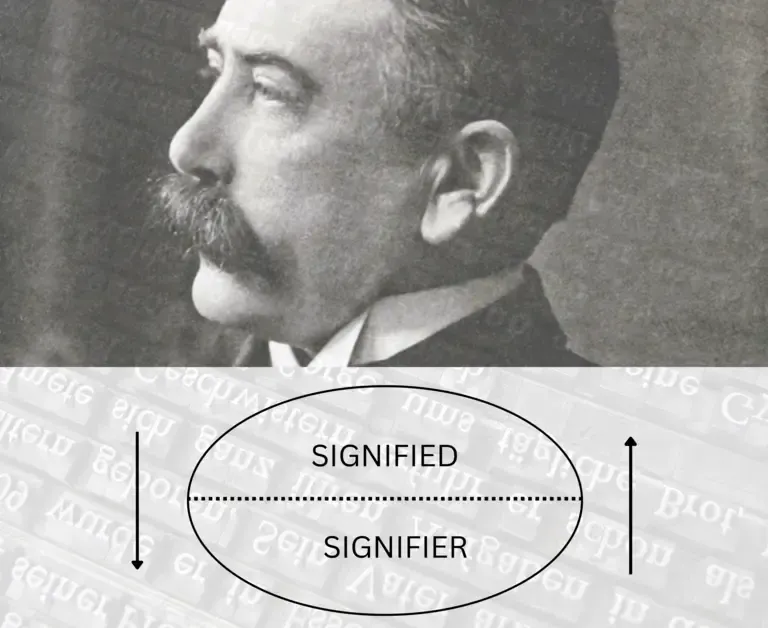
Nature of the Linguistic Sign
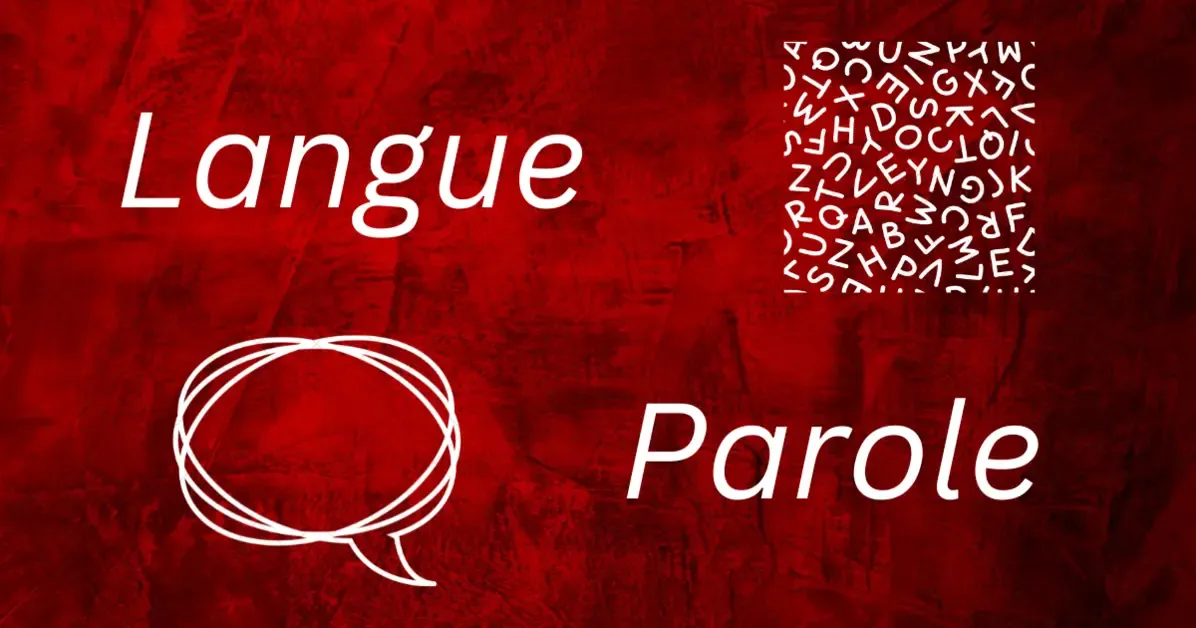
Langue and Parole
Thus, structuralism analyzes the underlying rules and systems of language i.e langue, rather than the actual speech, or parole.
Structuralism resembles marxism, and psychoanalysis, as it values deep structures over surface phenomenon. Structuralism decenters the individual and supports modern antihumanism and posthumanism. It views the sense of self as a construct and a product of impersonal systems
According to structuralism, we do not control or cause the conventions of our society, mother-tongue, or mental life. We are mere subjects and are a product of social and cultural systems.
To understand structuralist mind-set we can take an example of the fashion system. We know which fabric, styles, textures go with which. For instance, although we are never explicitly told so, we know that sneakers will not go with a saree. Similarly, different occasions call for different dress-codes. You will not wear casual jeans and a t-shirt at a wedding. A bride is culturally expected to wear red in a typical North-Indian wedding. These are some well-known but unconscious rules.
Similarly, in structural literary theory, authors and readers have knowledge of not so explicit literary conventions of reading and interpretation. For structuralists and semiotics, literature is a system made of various conventions. These conventions are the most visible in literary genres.
Post-Structuralism and Deconstruction
late 20th Century
What is deconstruction?
The very act of attempting to define deconstruction goes against the theory. The term "deconstruction" comes from Martin Heidegger's concept of "destruktion". Deconstruction involves decentering and unmasking the problems with fixed centers. Deconstruction was primarily founded by Jacques Derrida who caused a major academic shift through his seminal lecture at John Hopkins University in 1966. This lecture was titled "Structure Sign and Play in the Discourse of the Human Sciences".
According to Derrida, almost all of the Western thought was founded on centers such as- Origin, Truth, the Ideal Form, a God, a presence, etc. The center constitutes all meaning. Derrida found the centers problematic because they marginalized, repressed, and ignored any alternatives or differences. For instance, a male dominated society completely marginalizes and ignores the existence of a female. Thus, the center attempts to freeze the play of binary opposites.
What are Binary opposites?
According to Derrida, we are able to access reality only through codes, concepts, and binary pairs. Let's take the examples of binary pairs such as Nature/Culture, Man/Woman, and Christian/Pagan. The members at the left-side in these pairs are the ones at the center and are considered reality. The secondary term becomes marginalized and is repressed or omitted. This restricts the free play between the pairs. While one takes the center, the other is simply not catered to and is just reduced to a tool to cement the position of the central concept.
Thus, the deconstruction literary theory does the following :
- Focuses on binary oppositions within a text.
- It then highlights how these binary opposites are related to each other. How one constitutes the center and is perceived as natural, privileged, and central, while the other is repressed and marginalized.
- It then subverts this relationship where the marginalized becomes the center, and the meaning of the text shifts and changes from its prior interpretation.
- Lastly, both the terms are seen in a free-play of non-hierarchical and more importantly unstable meanings.
Deconstruction literary theory emphasizes that reality and language don't have a singular center. We try to construct new centers out of our impulsive anxiety and marginalize everything different. Deconstruction literary theory encourages us to see the free play in our languages and texts.
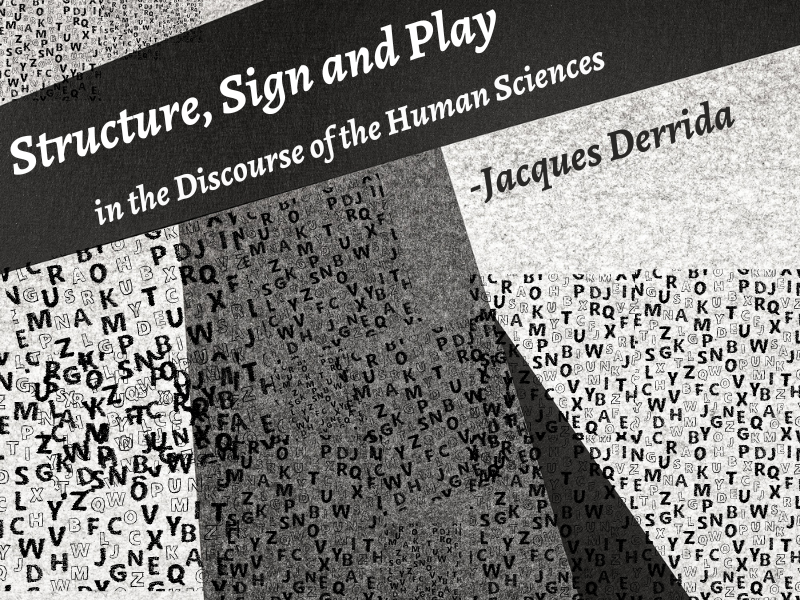
What is Post-Structuralism?
Poststructuralism was a movement associated with French intellectuals such as Jacques Derrida, Julia Kristeva, Roland Barthes, Gilles Deleuze, Felix Guattari, and Michel Foucault. These theorists were critical as well in debt to structuralism. Structuralism understands literature through structures and believes that truth and reality reside within a structure. Post-structuralism criticizes structures. Post-structuralist literary theory emphasizes that there is no universal truth or reality, and that they are just constructions.
Post-Structural literary theory:
- Problematizes linguistic referentiality
- Emphasis on heteroglossia (presence of differences in a language).
- Decentres the subject and considers it as a cultural construct
- Does not accept reason as universal
- Rejects Humanism
- Stresses on differences.
Feminist Literary Theory
Feminst Literary Theory
As a part of the broader political movement, feminist literary theory highlights and rectifies discrimination on the grounds of gender. Feminist literary theory focuses on:
- Exposing masculinist stereotypes
- Marginalization, distortion, and commission of women in male-dominated literatures
- Studying female creativity genres, literary styles, themes, and literary traditions
- Discovering and reading the neglected literature created by women
- Developing feminist theoretical methods and concepts.
- Evaluating forces that impact and shape the lives of women and their literature. These include psychology, politics, biology, and cultural history.
- Creating new roles and opportunities for women.
Feminist literary theory criticizes sexist representations and advocates institutional and social reforms.
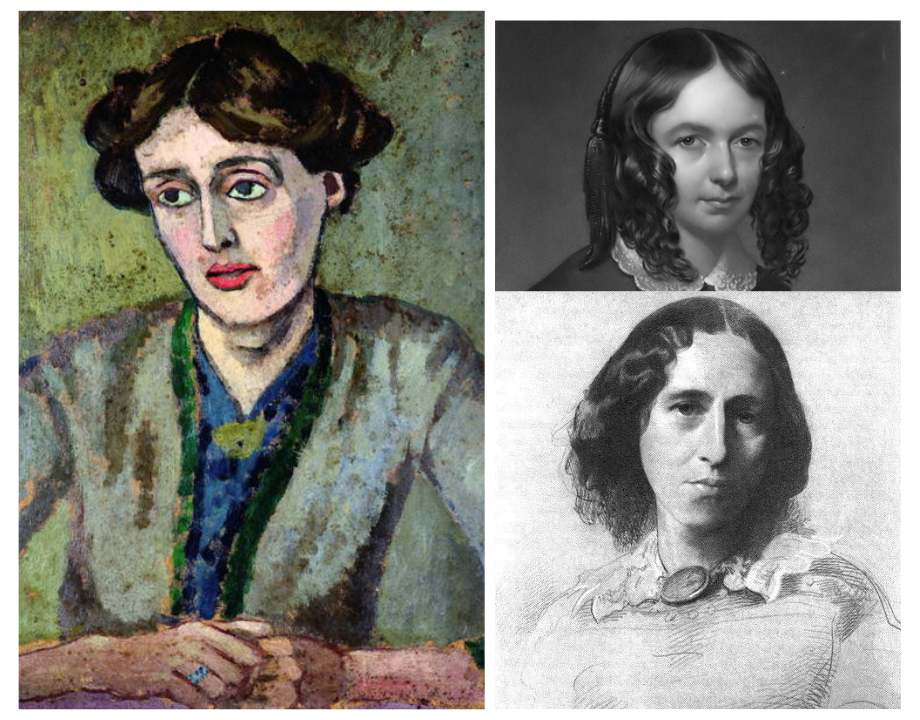
Gynocriticism
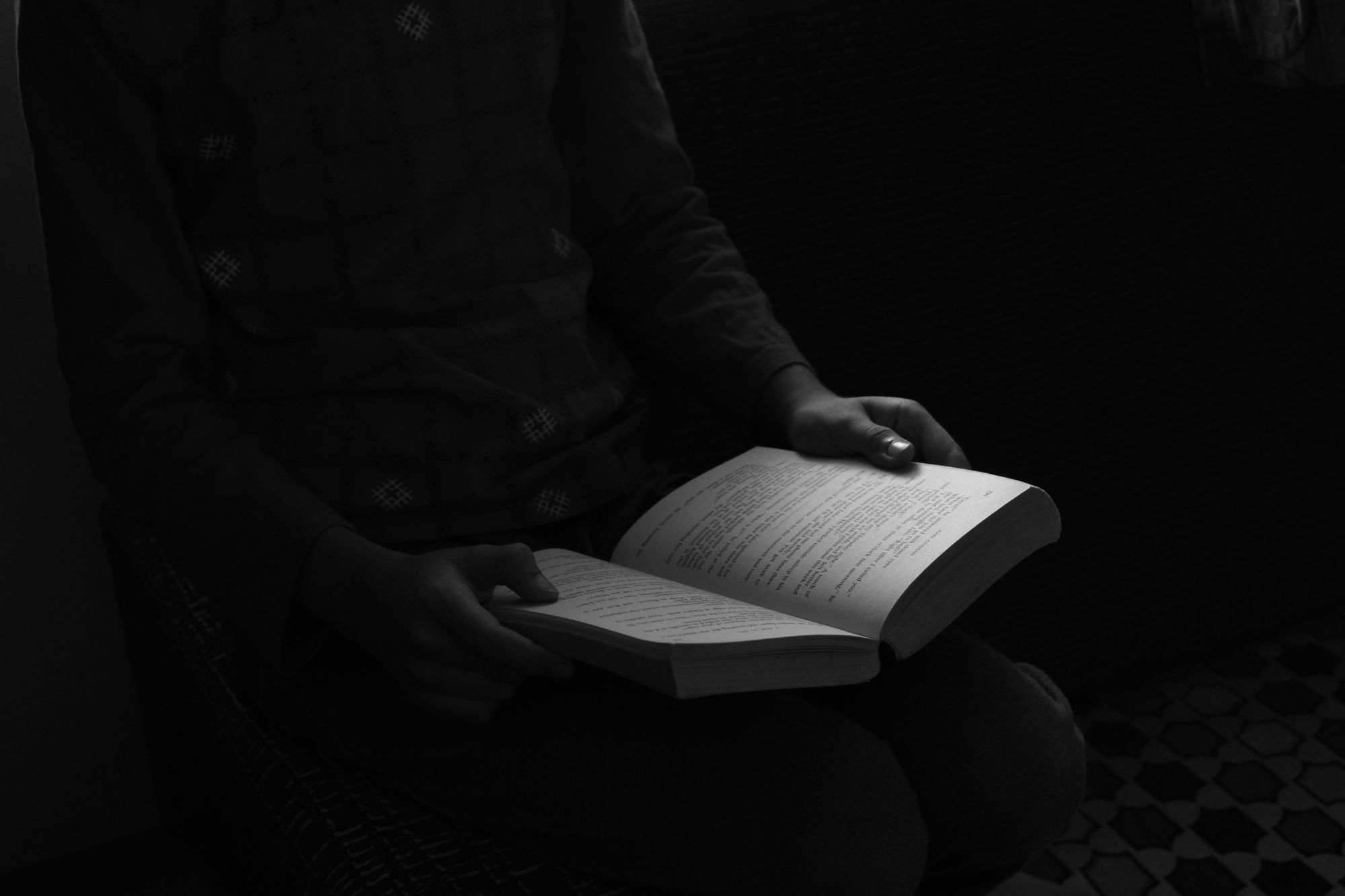
Toward a Feminist Poetics by Showalter
Feminist literary theory argues that women have a literature of their own. They have their own themes, genres, styles, forms, characters, and canons. This notion is best represented by Elaine Showalter's "A Literature of Their Own – British Women Novelists from Bronte to Lessing". According to Showalter, women create a subculture and share distinct economic, political, and professional realities. Literature created by women highlights and depicts problems and artistic preoccupations exclusive to females.
Another crucial contribution to feminist literary theory is "The Madwoman in the Attic" by Sandra M. Gilbert and Susan Gubar. Gilbert and Gubar contrasted Harold Bloom's concept of 'anxiety of influence' with their 'anxiety of authorship'. Anxiety of authorship is the paralyzing fear and belief that they cannot write. There were women like Aphra Behn, Mary Shelley, George Eliot, Anne Brontë, Charlotte Brontë, and Emily Brontë, who overcame this anxiety of authorship and wrote. Thus, they became like a precursor mother/sister author and helped the new female writers write against a severely male-dominating society. The anxiety of authorship is not competitive like anxiety of influence. The relationship between female writers is nurturing and cooperative rather than competitive.
Judith Fetterley's "The Resisting Reader: A feminist Approach to American Fiction" highlighted how women read differently than males. She accurately states that masculine literature is often labeled as universal literature. This forces women to identify against themselves . Moreover, they have to think like men. Reading masculine literature does not express or legitimize the experiences of women. Eventually, they begin to conform to the male viewpoint, and accept oppression and sexist hostility. Thus, women must become resistant readers through feminist literary theory and challenge misogynistic conventions.
Psychoanalysis also forms an important aspect of feminism. However, most of the feminist psychoanalysis criticized and revised "phallocentric" concepts of pioneer psychoanalysts such as Sigmund Freud, Jacques Lacan, etc.
Postcolonial Literary Theory
Postcolonial Literary Theory
Postcolonial literary theory aims to describe the mechanisms of colonization, and recovers the oppressed and marginalized voices. One of the most seminal postcolonial works, "Orientalism" by Edward Said, examines how the Western representation of the third world only serves their own political interests.
Postcolonial literary theory also highlights how an unbalanced power relation shapes knowledge production. For example, the West constructs the subaltern as the "Other". This creates a binary pair where the West becomes the normalized, privileged center, while the "other" is ignored and repressed. This repressive relationship becomes a stereotype and is eventually circulated through literature, mass media such as television, news, and the internet.
Postcolonialism focuses on literature about colonization, created by the colonized subjects. Postcolonial literary theory exposes the colonial educational institution, and exposes the antagonistic relationship between the pre-colonial cultures and the imposed imperial culture.
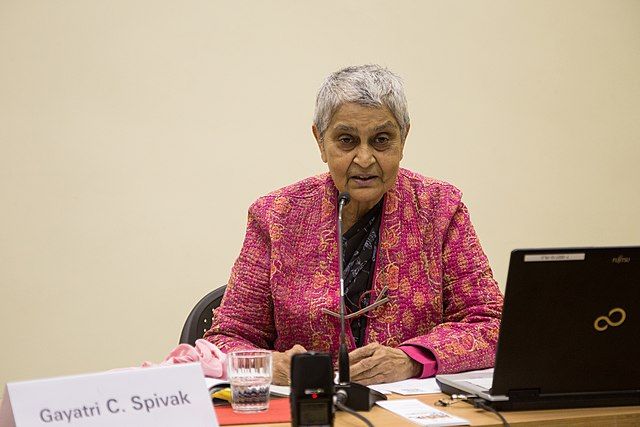
Gayatri Chakravarty Spivak
New Historicism
New Historicism
Conceptualized under the influence of Stephen Greenblatt and Michel Foucault, new historicism is a field in literary theory that studies literary texts as material artifacts that are intensively involved with social, political, and cultural forces. It understands intellectual history through literary texts and emphasizes the text's historicity by relating it to ideology and society of that time.
The socio-economic conditions at the time of conception and publication of the text become co-texts in new historicism. Just like post-structuralism, this branch of literary theory rejects the notion that characters, readers, and writers share a common, universal human nature. Instead, identity and meanings are hybrid and plural. Even a critic of a literary text is affected by his/her socio-political circumstances, and ideology white interpreting a literary work.
Cultural Studies
Culture is the cumulative product of language, morality, beliefs, laws, and customs acquired and practiced by human beings. Therefore, literary theory inevitably involves cultural studies. Culturalism argues that literature and what constitutes literature is not static and is subject to inevitable change with time, place, and readers.
Cultural studies can be viewed as opposite to formalist literary theory. While formalism offers an extremely focused and aesthetical reading of literature, culturalism offers a broader reading of literary works, involving psychology, politics, and sociology.
It is an interdisciplinary field that draws from sociology, history, anthropology, and political science. It studies the ways in which culture is created and the ways it changes and evolves over time.
Queer Theory
Queer Theory
Queer literary theory criticizes central hetrosexual binary, masculine/feminine, as it not only marginalizes any other sexuality but also perceives it as abnormal, and more dangerously, criminal. It attacks the homophobic and patriarchal notions of heterosexuality.
Queer literary theory is not confined to lesbian and gay theories. Instead it focuses and studies all other deviant and alternative sexualities such as sodomite, hermaphrodite, and homosexual. Queer theory emphasizes how like all identities, sexual identity is also a social construct subject to rules, conventions, and norms, and resists fluidity and instabilities.
Difference between Literary theory and Criticism
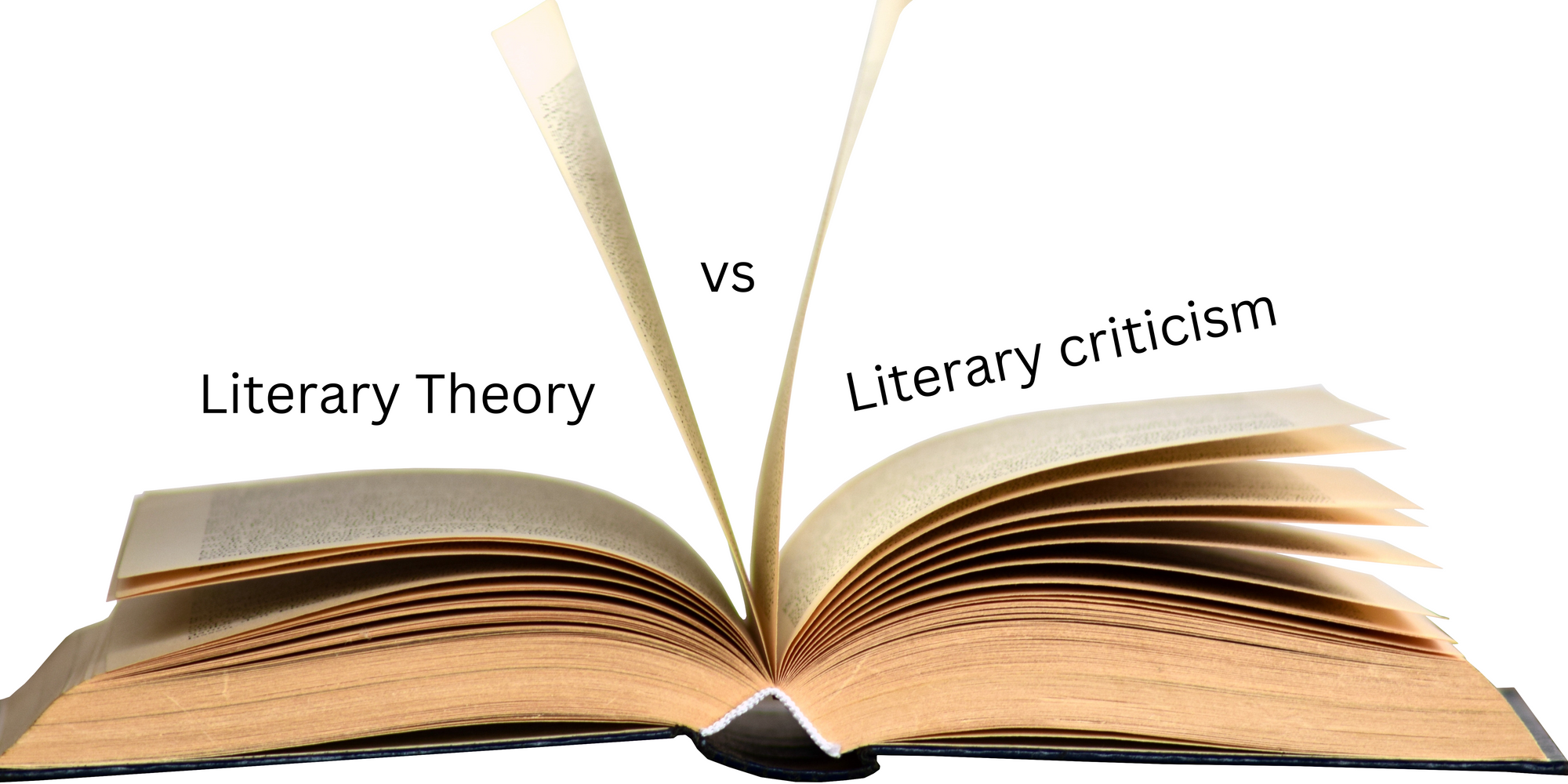
Literary theory comprises a set of perceptions, concepts and principles that impacts our understanding of literary works. The application of these perceptions and concepts to a text is called literary criticism.
To understand this better, let us consider the concept that women are oppressed and ignored in a male dominating society. This repression and marginalization is extended in all spheres- society, family, politics, literature, etc. This train of thought is not entirely abstract but is substantiated through historical evidence.
The set of concepts that emphasizes discrimination on the ground of gender are included in feminist literary theory. Once we are introduced to feminist theory, we become better equipped to notice and highlight any explicit or subtle repression of women in a literary text. The moment we begin to interpret and critique a literary work using feminist theory, it becomes feminist criticism.
Importance of Literary theory.

Literary theory consists of diverse concepts and perceptions. It has been argued that theory distances a reader from the actual text. However, it also equips the reader with an all-rounded and informed perception. With literary theory, we are no longer passive readers who are easily persuaded or swayed. We begin to see what a text is explicitly or subtly attempting to do. For instance, postcolonial literary theory helps us see the marginalization of colonized, subtle racism, and imperialism in a literary text. We are able to see racism in popular and celebrated literary texts such as William Shakespeare's Othello and the Tempest, Joseph Conrad's Heart of Darkness, because postcolonial literary theory made us sensitive to the prevalence of such practices.
Literary theory is also instrumental in bringing about societal changes. It enables literature to help evolve its readers. The fact that we are today more sensitive and intolerant towards racism, misogyny, and any form of marginalization, is significantly because of theory.
Theory empowers readers. For instance, marxism emphasizes how literature acts as one of the mediums through which the bourgeoisie perpetuates its ideology without any physical force. Thus, the reader through the marxist literary theory becomes aware of the persuasive powers of literature and enables him/her to resist it.Literary theory enriches our reading experience. Once we are introduced to the diverse perceptions and concepts founded by the brightest minds in history, our reading experience is drastically enriched and we become more aware of the political and social systems around us. Through theory, literature becomes a powerful instrument of mental and societal changes. In his book "The Literary in Theory" Jonathan Culler accurately observes that "We are inexorably in theory, whether we champion or deplore it".
Refrences
Habib, Rafey. Modern Literary Criticism and Theory : A History. John Wiley & Sons, 2008
M A R Habib. Literary Criticism from Plato to the Present : An Introduction. Chicester, Wiley-Blackwell (An Imprint Of John Wiley & Sons, 2011
Leitch, Vincent B, et al. The Norton Anthology of Theory and Criticism. 3rd ed., New York, W.W. Norton & Company, 2018.

